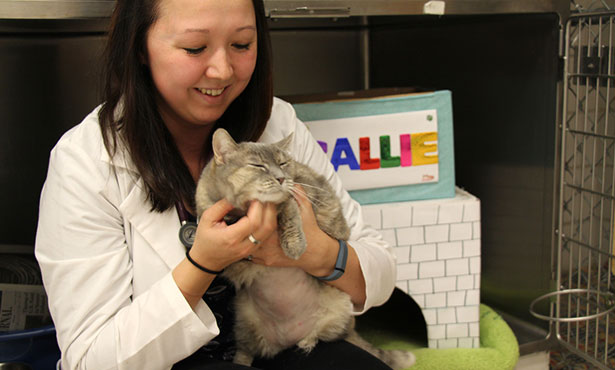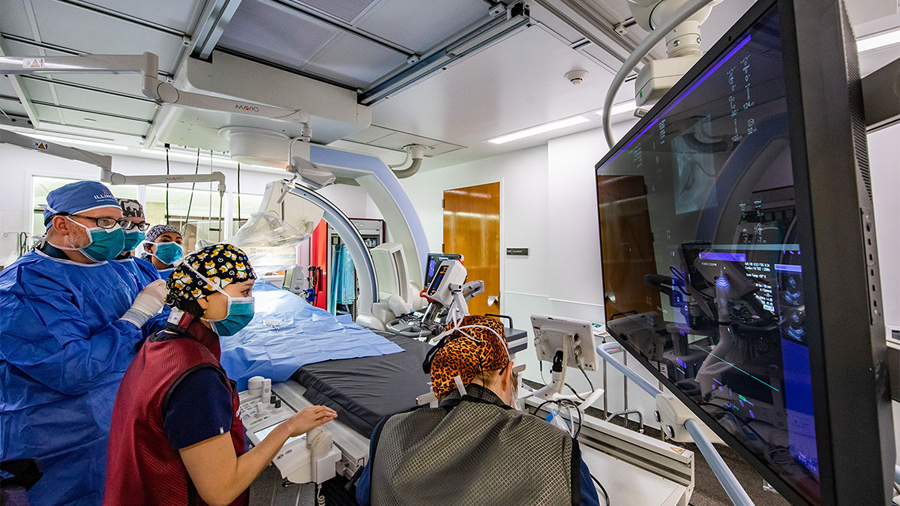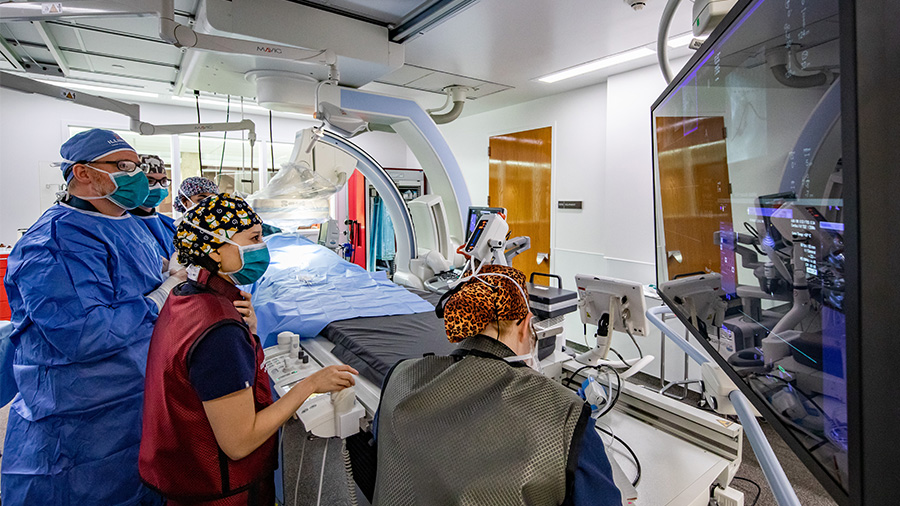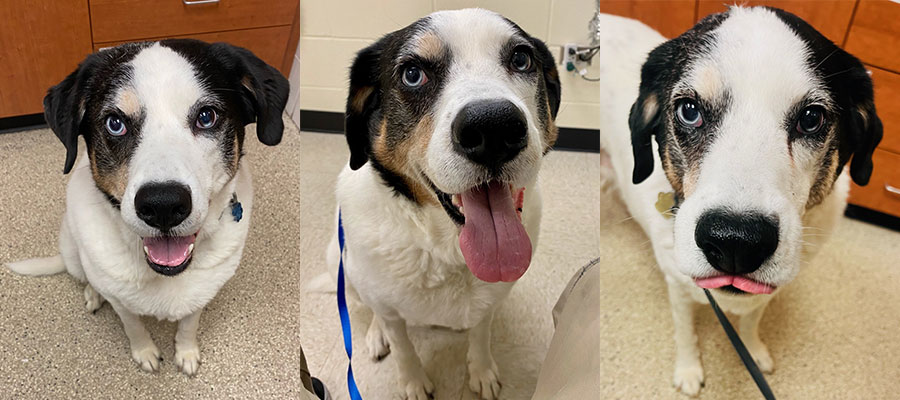They say a man’s home is his castle, but for one patient at the University of Illinois Veterinary Teaching Hospital, a castle became her home away from home.
Callie, an 8-year-old cat, was brought to the hospital because she was having difficulty breathing. Fourth-year veterinary student Caroline Fallon was assigned to Callie’s case.
“I could hear Callie’s congestion when she was trying to breathe through her nose. Her owner, Lorraine, was very dedicated and I could clearly tell how much she cared for Callie,” Fallon says.
Doctors recommended imaging Callie’s nasal sinuses, a procedure that requires anesthesia. To minimize Callie’s stress level as she waited for the anesthesia and imaging teams to call for her, the door of her cage was covered with a towel. The clinical setting can be a fearful environment for cats, especially when they have no place to retreat from other patients and caretakers who are constantly in view.
“It is often hard to determine a cat’s temperament while they are with their owners,” Fallon says. “When I went to check on Callie, she came up to the cage and started rubbing against my arm, wanting me to pet her. I came to check on her three to four times while waiting for anesthesia because I wanted to make sure she was okay and had the attention she wanted.”
Unfortunately, Callie’s diagnosis turned out to be lymphoma in her nose.
“Telling an owner that their pet has cancer is terrible. It was difficult to talk Lorraine through it, but I could tell that she wanted to treat her cat and do whatever she could. She was grateful we could tell her what was happening to Callie,” Fallon says.
Oncology resident Dr. Zachary Neumann took over direction of Callie’s care. The treatment plan called for chemotherapy five times a week for three weeks.
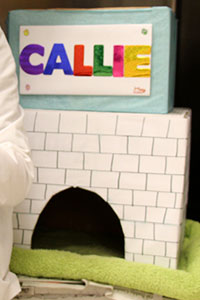
“Since Callie needed to stay for an extended time, Dr. Neumann asked if I had any empty boxes to make a comfortable hideout for Callie while she stayed in the clinic,” says Fallon, who at that point was no longer assigned to the service area that was caring for Callie.
After looking around for boxes, Fallon decided that she would make Callie a castle.
“I was so moved by the thought of Lorraine not having her cat and the thought of Callie being at the hospital instead of being at home,” Fallon says. “I wanted to make her something special to help her have a place to hide and to sleep.”
Callie’s castle consisted of two boxes arranged to make an indoor hiding place and a “second-story” bedroom where Callie could sleep. Fallon added the castle’s finishing touches by drawing blocks on the outside and writing Callie’s name in colorful lettering.
“I know Callie can’t appreciate the colors and her name on the castle, but I figured maybe it makes a difference when other staff walk by. It might make them stop and give her extra attention,” Fallon says.
“Giving them a place to hide is a nice option in oncology since the patients are not in critical condition and don’t need to be constantly monitored,” Fallon says. “The times I checked on her, Callie was using both the bottom and top of the castle. She was always happy when anyone came to see her.”
After a few weeks of therapy, Callie’s upper respiratory sounds improved greatly. Instead of raspy sounds, Fallon could hear Callie purring.
“Whenever I had free time, I visited Callie and spent time with her. She is such a sweet cat and I am happy to know I did what I could to make her feel safe,” Fallon says.
Lorraine is also grateful for the special care Callie received while she was in the hospital.
“Everybody was wonderful. Not a bad apple in the bunch,” Lorraine says. “She’s my best cat. I was very excited to have her back.”
—Melissa Giese

